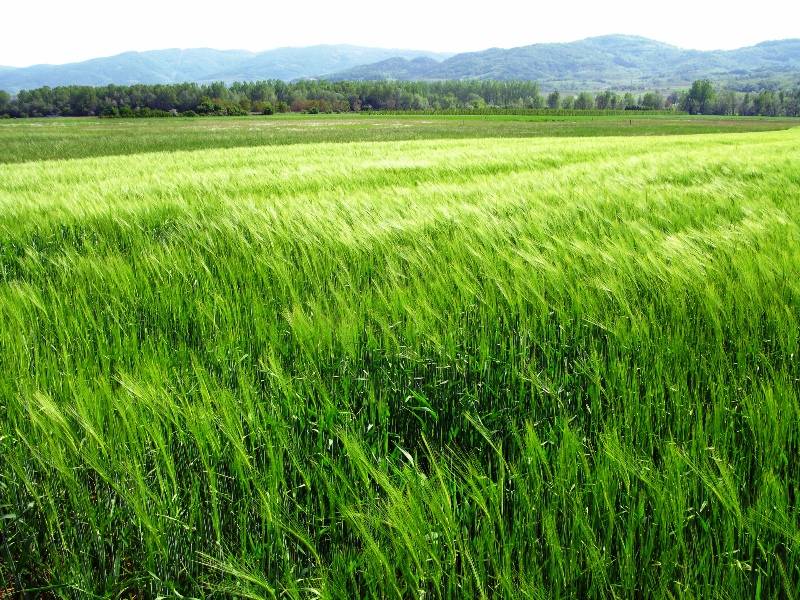
With the delayed arrival of monsoon, the withdrawal has also been delayed this year. Met experts believe that the withdrawal is likely to commence only by the end of September. In June this year, the delay in the arrival of monsoon and the subsequent impact of cyclone Vayu resulted in the worst performance of monsoon in the last five years. However, bountiful rains in July and August made up for a substantial deficit of 33 per cent. Now, the 2019 monsoon figures are the best in the last five years with over 5 per cent excess rainfall. India received a total of 931.6 mm rainfall from 1st June to 30th September as against the normal of 869.4 mm. Heavy rains in August and September caused floods across Rajasthan, Maharashtra, Karnataka and Kerala. Based on the above conditions we fell that the total Kharif crop production scenario for the year 2018-19 would turn out to be as explained below.
Dr. Hanish Kumar Sinha, Head of Research & Development, National Bulk Handling Corporation (NBHC) has come out with the first Kharif Crop Estimates for 2019-20:
Total Rice is expected to show marginal improvements in area by 2.80 per cent because of farmers are shifted 20 per cent – 25 per cent crop area from non-basmati rice to basmati rice in Punjab on higher export demand of last year. Receding waters in flood affected regions of Bihar, Odisha and Karnataka have helped in recovering area under paddy cultivation but delayed in sowing we are expecting lower yield by 2.58 per cent. To save water for our future generations, Department of Agriculture and Farmers welfare, Haryana launched a new pilot scheme. The scheme is for replacement of paddy by Maize and other crops in 7 dark zone brocks with a target to diversify around 50000 Ha area from this season. A smaller crop last year pushed India to import maize after a gap of two years; acreage is expected to increase by 7.17 per cent this year but still we are expecting a 5.75 per cent lower crop size because of the widespread fall armyworm infestation which is already showing signs of aggravations. Area and production of Jowar is expected to fall by 4.79 per cent and 0.61 per cent respectively and Bajra area is expected to increase by 2.47 per cent despite decline in production by 4.69 per cent.

In the pulses sector, acreages under Tur and Urad exceeded last year’s levels after widespread rains in early August boosted the sowing, the government has begun to dispose of stocks. Arhar area is expected to increase by 1.69 per cent and the production is expected to rise significantly by 21.27 per cent. Urad production is expected to be low by 0.16 per cent. We expect the area under Moong to increase by 4.66 per cent whereas the production is expected sharply lower by 17.23 per cent mainly due to flooding of fields in Madhya Pradesh, Maharashtra & Rajasthan.
In oilseeds, Castor area is expected to increase by 5.32 per cent and likely to see a significant increase in production by 21.07 per cent due to good prices of castor in domestic Mandis. The decline in production is expected to the tune of 8.90 per cent and 2.32 per cent for Sesamum and Sunflower respectively and marginally improvement is expected in Groundnut and Niger Seed by 4.93 per cent and 4.93 per cent respectively. Soybean acreage expected to improve by 5.68 per cent but the production is expected significantly lowered by 17.72 per cent due to heavy rains and widespread flooding in the major growing area which has diminished the hope of normal crop in the major soybean growing regions.
In this current monsoon season, the cash crop section is likely to show an overall neutral scenario as area for Sugarcane is expected up by 14.32 per cent but decline in production by 5.60 per cent because of farmers from major sugarcane growing belts are shifted sugarcane crop to other crops as government gives incentives to encourage farmers to grow crops other than sugar cane. Among the potential recommendations is an incentive of 6,000 rupees an acre for farmers who stop growing sugarcane, especially in the major sugarcane growing states such as Uttar Pradesh. Cotton area and production is expected up by 4.32 per cent and 9.99 per cent respectively.
Summary
-
Total Rice is expected to show marginal improvements in area by 2.80%.
-
Area and production of Jowar is expected to fall by 4.79% and 3.70% respectively.
-
Bajra area is expected to increase by 2.47% despite decline in production by 5.83%.
-
In the pulses sector, acreages under Tur and Urad exceeded last year’s levels. Tur production is expected to be low by 2.78 per cent. Urad area is expected to increase by 0.36 per cent but production is expected to decline significantly by 15.73 per cent. Moong to decrease by 4.66 per cent whereas the production is expected sharply lower by 22.93 per cent.
-
In oilseeds, Castor area is expected to increase by 5.32 % and likely to see significant increase in production by 12.25%.
-
Sugarcane is expected up by 14.32% but decline in production by 12.32%.
-
Cotton area and production is expected up by 4.32% and 7.45% respectively.
















